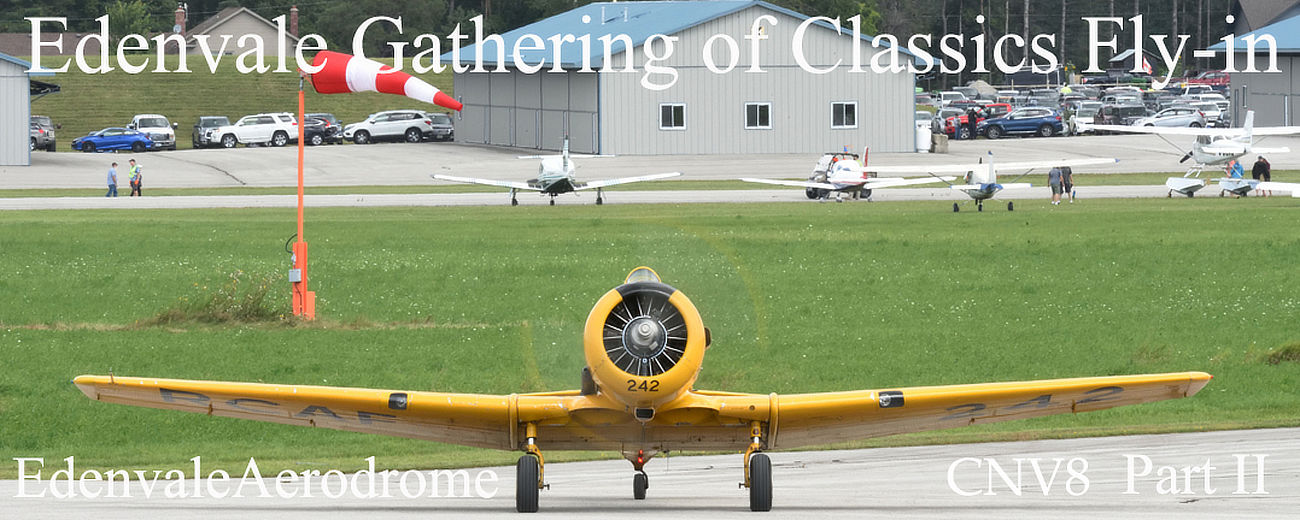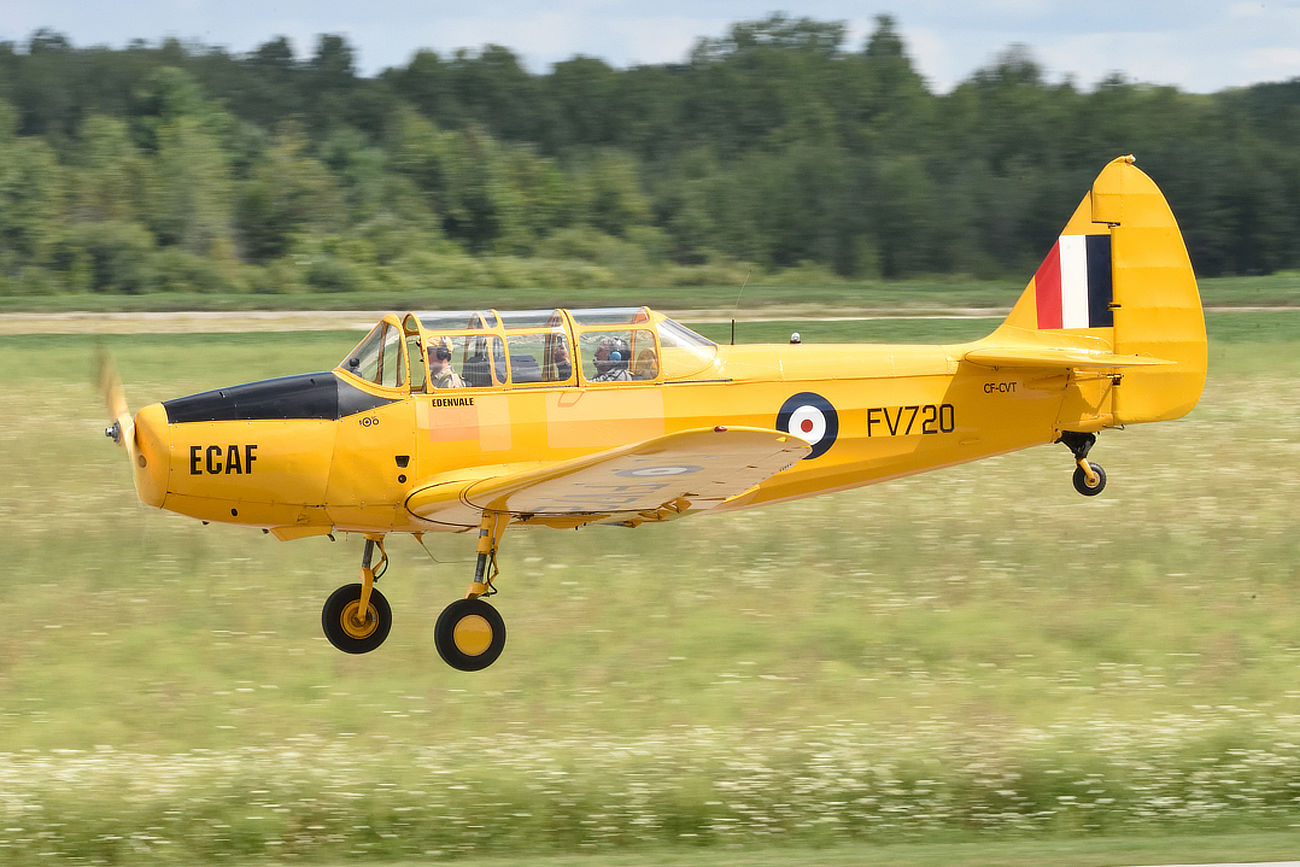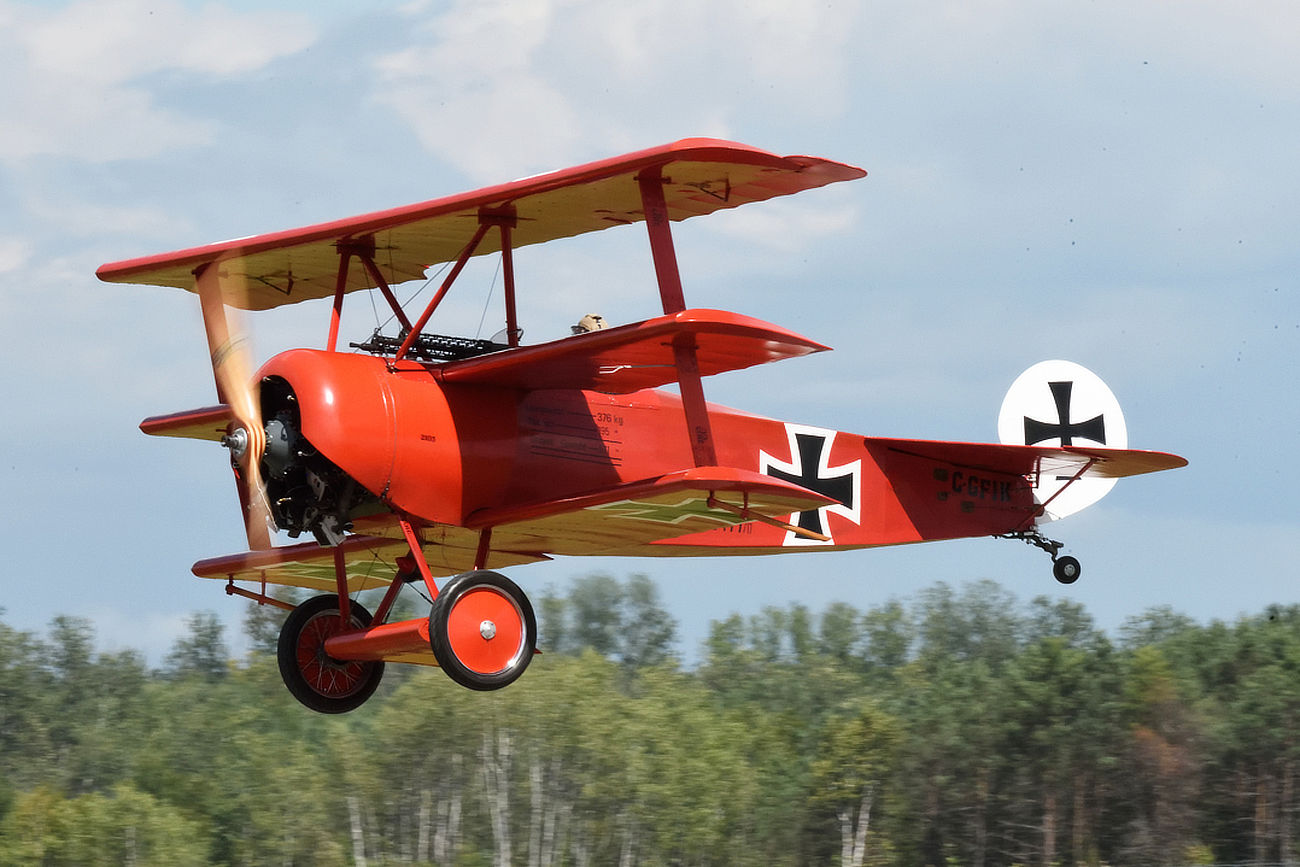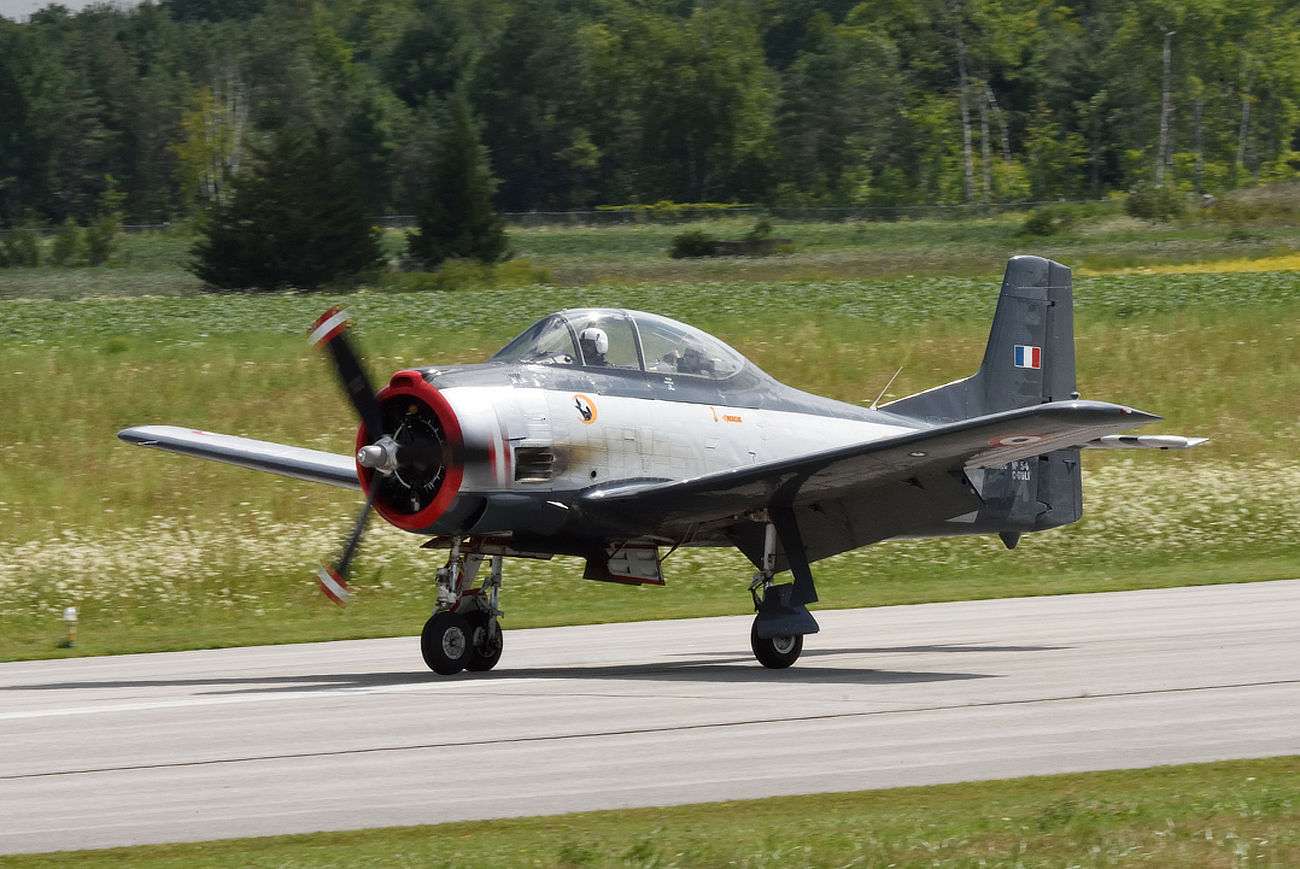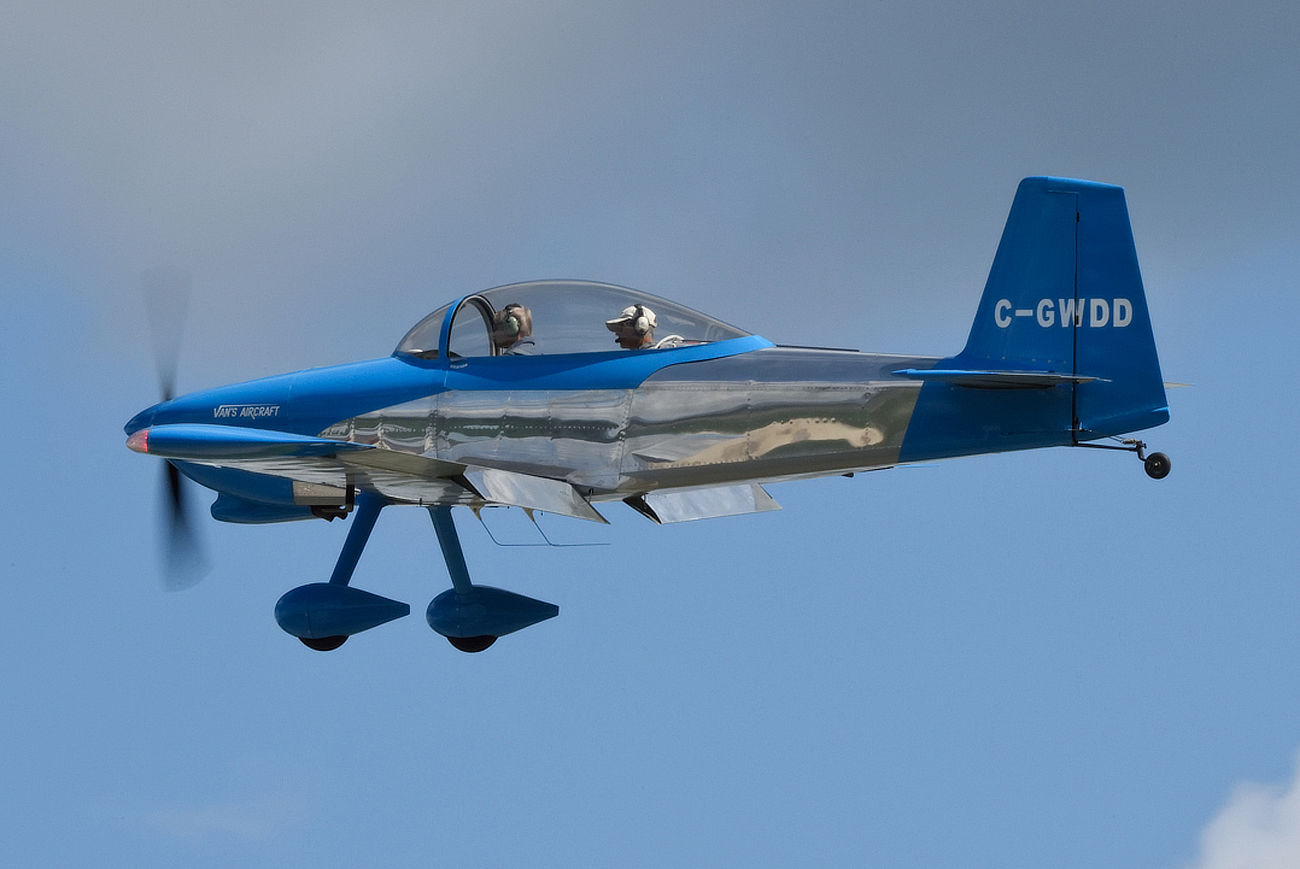ISSUE 894 - September 17, 2024 • Over 7,000 Total Ads Listed • 1,000+ NEW Ads Per Week
This eFlyer Has Been Sent To Over 156,000 Subscribers
|
| Gathering of Classics in Edenvale - Part 2 |
| Kevin Moore, Contributing Writer & Photographer |
|
Last week we had a look at some of the aircraft that made the trip to Edenvale Aerodrome for the 2024 Gathering of Classics Fly-in, an annual event in early August that typically attracts 50 to as many as 200+ aircraft if weather permits. This week we return to Edenvale to see what else flew in for the day and learn about the area should you decided to visit for longer than just a few hours during the fly-in.
|
|
|
The Gathering of Classics Fly-in is a great day out for the entire family.
You could even take a flight in a vintage aircraft such as the ECAF
(Edenvale Classic Aircraft Foundation) Fleet Cornell. |
|
|
|
| There's even things for the kids to do, "fly" a Tiger Moth pedal car, left. This Cessna 150, right, was one of several 150s that came to the fly-in. |
|
During the fly-in, aircraft come and go throughout the day. Typically, the fly-in officially beings at 10:00am and goes until 4:00pm. Some come early and stay for most of the day, others come, have a quick browse, maybe a bite to eat, then depart. However long you stay, whether you've come by aeroplane, car, motorbike, bicycle or even walk, if you're local enough, you'll find the day enjoyable and fun. If you're local, supporting the event, the vendors and the museum means the continued viability of the fly-in, airport and everything about it.
|
|
|
|
| The Thurston/Schweizer TSC-1A2 Teal amphibious aircraft landing, left, and departing, right. |
|
A unique little aeroplane that visited from the Cobourg area was the Schweizer TSC-1A2 Teal amphibious aircraft. Originally designed by David Thurston, the original TSC-1A aircraft, in fact the first 16, were built by the Thurston Aircraft Corporation in Sanford, Maine. The first Teal flew in 1968 and certification was obtained in 1969 with subsequent aircraft designated as the TSC-1A1. However, in 1972, Thurston moved to Schweizer Aircraft Corporation and further aircraft were designated as the TSC-1A2 Teal II. In 1979 Schweizer sold off the production rights to the Teal Aircraft Company in Markham, Ontario, Canada. The Teal features a side-by-side, 2 place cockpit. An odd feature of the aircraft is that the cruise is actually faster with the landing gear in the down position rather than "retracted," or actually swung backward into a horizontal position to ensure they're clear of the water. There are several variants of the Teal but the TSC-1A1 has an empty weight of 1360lbs (617kg), max take off weight of 2,200lbs (998kg), a cruise speed of 108mph (174kmh), a stall speed of 57mph (92kmh) and a range of 500 miles.
|
|
|
|
| For the most part, the weather was nice but the crosswind did make some landings, and take offs, a little more challenging. |
|
Though the weather to the north and northwest wasn't ideal and, no doubt, prevented some aircraft and their pilots from making the trip, the turnout of aircraft wasn't bad when you also take into consideration the stiff crosswind. It's always good for pilots to test their ability and skill set against tougher conditions, as long as those conditions are within legal limits and the ability of the pilot, and aircraft. The more you improve your skills the more opportunity you'll have available to you at other airports, or on lakes, rivers and in an emergency situation, whatever's available.
|
|
|
|
| Aerotechnik SportStar is a sporty Advanced Ultralight Aircraft (AULA) that's ideal for training ultralight pilots. |
|
There were also some ultralight aircraft that made the flight to Edenvale and, despite the gusty crosswind, they handled it beautifully, including the local ultralight aircraft from the ultralight flying school based at Edenvale. Their Aerotechnik SportStar aircraft flew several introductory flights during the day. These low wing, 2-place AULA (Advanced Ultralight Aircraft) are a comfortable aircraft in which to learn to fly and earn your PPUL (Pilot Permit Ultralight) over beautiful central Ontario. If you're interested in learning to fly ultralight aircraft, research flying schools in your area or head to Edenvale and talk to the folks here.
|
|
|
|
| The ECAF Fleet Model 80 Canuck took to the air with a photographer on board, left. One of two Stinson 108 Voyagers that visited the fly-in, right. |
|
The city of Barrie is only about 15 minutes east of the airport and Barrie has lots to offer. In some ways, Barrie is a gateway to Ontario's famous "cottage country." Situated on the western shore of Lake Simcoe, water sports such as sailing, kayaking, water skiing, canoeing, swimming and power boating are very popular summer activities. During the winter there's cross-country skiing, skating and ice fishing that are some of the popular winter sports. Whether you're into any of these activities, or you prefer shopping in town, hiking or walking along trails and paths, there's something for everyone. The surrounding area offers much to the adventurous throughout the year. There's also all types of accommodation, fast food and sit-down chain restaurants as well as local family diners.
|
|
|
|
| The Diamond DA40 is a comfortable 4 place aircraft with North American versions built in London, Ontario, Canada. |
|
The Diamond DA40 Star was originally designed and built in Austria and is built using composite materials. They are produced in both Austria and in Canada (London, Ontario) and was derived from the Diamond DA20. The DA40 first flew in 1997 and is still in production today. The first DA40 was powered by a Rotax 914 engine followed by a Continental IO-240 then a Lycoming IO-360. There was also a diesel engine version built in the Austrian factory. New version were outfitted with a fuel injection system using the Lycoming IO-360-M1A engine. Approximately 1000 aircraft a year are produced. Though originally built with standard instruments, current DA40s are only offered with the Garmin G1000 glass cockpit. Diamond are also producing an all electric training variant known as the eDA40 offering up to 90 minutes flight time. In total, there are 8 variants of the DA40 and are flown as both civilian aircraft and with several militaries. The DA40XL has an empty weight of 1753lbs (795kg), gross weight of 2641lbs (1198kg), a cruise speed of 173mph (279kmh), stall speed of 57mph (91kmh) and a range of more 800 miles (1300+km).
|
|
|
|
| New hangars being completed, left. Aircraft taxiing out with some of the existing hangars in the background, right. |
|
As mentioned previously, Edenvale Aerodrome is seeing growth and upgrades. As general aviation in Canada suffers, for an assortment of reasons, including closures of airports such as one of the most recent airport closures of Buttonville Airport near Toronto, pilots as well as aircraft owners have had to look elsewhere to fly and/or hangar their aircraft. Despite the distance, Edenvale has proven to be an ideal location for some and the airport continues the expansion with more hangars. It's a beautiful airport from which to operate from and it is likely to continue seeing more growth over the next several years.
|
|
|
|
| The Canadian Harvard Aircraft Association (CHAA) flew in with 2 of their Harvards, offering sightseeing flights in the area. |
|
Visiting the fly-in once again were the Canadian Harvard Aircraft Association (CHAA) from Tillsonburg, Ontario with two of their Harvard aircraft. The Harvard is the Canadian, BCATP version of the North American T-6 Texan. CHAA owns & operates several Harvards at their home field of Tillsonburg, Ontario as well as aviation events in Canada and the US. The Harvard was built in Montreal at Noorduyn Aviation, beginning early in the war, providing Harvards for the RCAF during World War II. Noorduyn built in excess of 2800 Harvards for the RCAF and RAF. Post-war, Canada Car & Foundry in Fort William (Thunder Bay, ON) built an additional 550 aircraft. The Harvard was used as an advanced training aircraft for those pilots moving on to fighters such as the Hurricane, Spitfire, Mustang and other high performance aircraft. The RCAF operated the Harvard from 1940 to their retirement in 1966. Many Harvards, as well as T-6 Texans and SNJs, survive around the world.
|
|
|
|
| The Japanese designed Mitsubishi MU-2B gets you there in comfort in the spacious cabin, up to almost 30,000' and at 300mph or more. |
|
The largest aircraft to visit the fly-in was a Mitsubishi MU-2B, wearing American registration. The Mitsubishi MU-2B is a Japanese designed high-wing monoplane with turboprop engines and was manufactured by Mitsubishi Heavy Industries in both Japan and San Angelo, Texas. It also offers a pressurised cabin for cruising at high altitude. The MU-2 was designed in the mid 1950s and first flew in 1963. The MU-2 has a cruise speed of 340mph (547kmh) though the economical cruise speed is 300mph (483kmh) and a stall speed of 115mph (185kmh, flaps down). It has a range of up to 1260 miles (2,334 km) and a service ceiling of just under 30,000' (9,020m). Depending on cabin configuration, the aircraft will seat 4 - 12 people in comfort.
|
|
|
|
| The Beech C24R Sundowner, left, and Cessna 172, right. |
|
Whether you came by aeroplane, ultralight, helicopter, by personal vehicle or by some other method, the fly-in offered everyone an enjoyable day out. The folks at Edenvale were welcoming and the fly-in is very well orgainised from the visiting aircraft to vendors to everything on-site, it made for a great day for all. Visitors had the opportunity to take a sightseeing flight in one of the ECAF aircraft, a CHAA Harvard, an ultralight aircraft and/or a helicopter flight. Kids could enjoy one of the pedal aeroplanes, enjoy an ice cream, burger, hotdog, popcorn and more and adults had lots of food choices as well. It's a great place to spend the day as a family or by yourself.
|
|
|
|
| Zenair CH300, left, and de Havilland DHC.82 Tiger Moth, right, coming in for the day. |
|
The Edenvale Gathering of Classics Fly-in is a great place to spend the day, whether you fly to the event, drive, or come by some other means. You can enjoy spending time having a look at other aircraft, check out the classic cars, wander through the museum and browse the vendors. There are pedal (car) aeroplanes for the kiddies, as well as other activities. There are numerous porta-potties throughout the grounds, lots of volunteers to assist you should you need help and there's plenty of parking both on airport grounds as well as local off-site parking with bussing offered from the parking area to the airport. Make plans to visit the 2025 Edenvale Gathering of Classics Fly-in. The flight over this area of Ontario is beautiful with Lake Huron & Georgian Bay to the north/northwest, Lake Simcoe to the east, the Bruce Peninsula to the west and Toronto and Lake Ontario to the south. You'll enjoy the view, and the flight, as well as the day at Edenvale Aerodrome.
|
|
|
|
| The Cyclone 180, left, dealing with the crosswind on landing. A Bellanca 8KCAB Decathlon, right, landing. |
|
|
|
| The ideal "low & slow" aircraft, Aeronca 7AC Champ, landing long, left. A Piper PA-24-250 Comanche on final, right. |
|
|
|
| A Stinson 108 Voyager, left, on take off roll, departing, after the fly-in. Locally based Cessna 310, right, landing after a flight. |
|
|
A beautiful German World War I replica Fokker Dr.I triplane from the from the
Ontario Aviation Historical Society. |
|
|
| North American T-28A Trojan that flew in for the day. |
|
|
| Van's RV-7A heading home. |
|
|
| Van's RV-8 climbing away, leaving the day behind. |
| By Kevin Moore, Contributing Writer & Photographer |
|
| |
|


